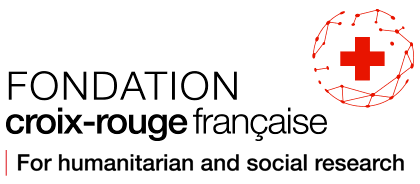The district of Ambovombe-Androy is strongly affected by climate hazards and food insecurity. Located in the south of Madagascar, it also provides an example of a traditional society which is deeply rooted in the lives of the population, with codified behaviours and social relationships. Tantely Andrianantoandro, Foundation research grantee, chose this context to study the conditions which would lead to an improvement in access to health services for pregnant women and their children.
Can you explain the context and issues of your research?
Tantely Andrianantoandro –This research-action aimed to study the elements which advanced the use of health services, particularly for pregnant women and their children. The research took place in the Ambovombe-Androy region in the south of Madagascar, which is constantly subjected to climate hazards and famines. There is a near-permanent presence of humanitarian NGOs. They fund actions and provide medicine, food supplements and first aid kits for pregnant women, delivered by primary health centres, which are managed by the Malagasy administration. However, in a context where the very survival of the population is under threat, fundamental needs such as health or education seem secondary. The aim of the study is to understand the reticences of the population, and the obstacles which they perceive in the access to care, to attempt to provide concrete solutions.
Your study focuses on access to care for pregnant women and their newborn children. What were the results of your observations?
TA – Firstly, the rate of recourse to prenatal consultation is very high. More than eight pregnant women out of ten attend these consultations. This number has been increasing since 2015. Why? The consultations are free, transport can easily be arranged, and the kits provided to the patients are seen as useful and attractive. These namely contain mosquito nets and medicine such as anthelmintics and vaccinations. On the other hand, for the delivery, a majority of women stay at home or go to the village matron. This is due, of course, to the distance from health centres and the impossibility of precisely predicting the date of delivery. But making delivery free and the kit more of an incentive would undoubtedly help to increase this rate.
Have you noticed a kind of competition between the village matrons and the midwives from the health centre, or more generally between traditional medicine and modern medicine?
TA – Without a doubt, the behaviours of Androy residents in terms of health are strongly marked by tradition. Self-medication is often practiced. For unknown diseases or incidents, people turn towards the traditional practitioners. You will never see someone go to the primary health centre for a fracture. The same goes for when someone has convulsions, since it is considered that the trouble is of celestial origin. The primary health centre is somewhere people go as a last resort, in serious cases or when the situation is not improving. However, it would be wrong to say that there is a rejection of modern medicine and the primary health centres. When NGOs recruited community agents to raise awareness and carry out prevention actions amongst the populations, the results were satisfactory. The rate of vaccinations shows that these actions have borne fruit. The practice of prenatal consultation is even greater in rural zones, which are more traditional. Rather than being in competition, matrons can be partners for the health centres.
Following on from your research, what are the areas for reflection which emerge to improve access to care?
TA – Firstly, the cost of delivery is an obvious barrier which is added to the distance and impossibility of predicting the date. Free delivery would lead to an increase in frequentation of the primary health centre. Secondly, improvements made to the kits distributed to women after birth would certainly increase the frequentation of neonatal consultations. The distribution of medicine against sovoka, a potentially fatal infection which affects postpartum women, would be a further inducement. Women are very aware of this risk.
Finally, the study shows that traditional practices are not an obstacle to modern medicine. On the contrary, community agents have played a positive role in vaccination campaigns. Yet the medical world looks upon the matrons with a degree of condescension. It is on their side that there is a rejection. We think that the role of matrons should be valued, rather than denying their importance. They could be recruited for awareness campaigns in order to implicate them in the recourse to medical care. From the point of view of the pregnant women, it would be easier to go to the primary health centres accompanied by women they trust. The matrons could be given non-medical tasks such as the cleaning of equipment. Modern medicine has every incentive to collaborate with the matrons. There is a real complementarity to be developed, because they are the best placed to broadcast information.
© IRD





